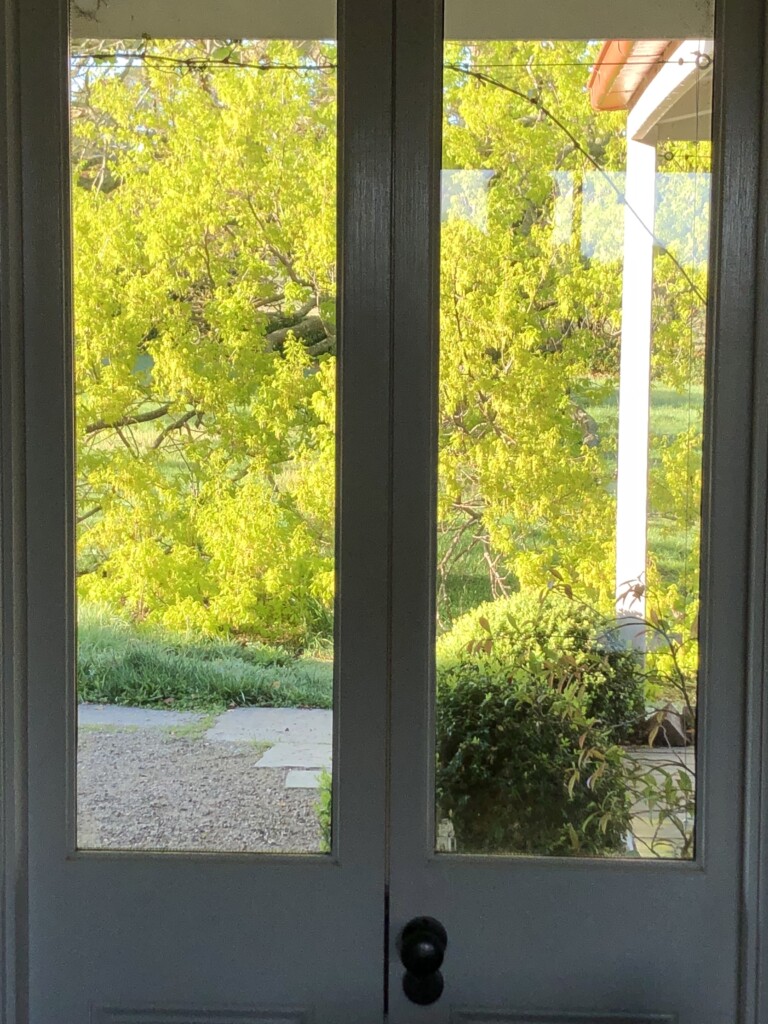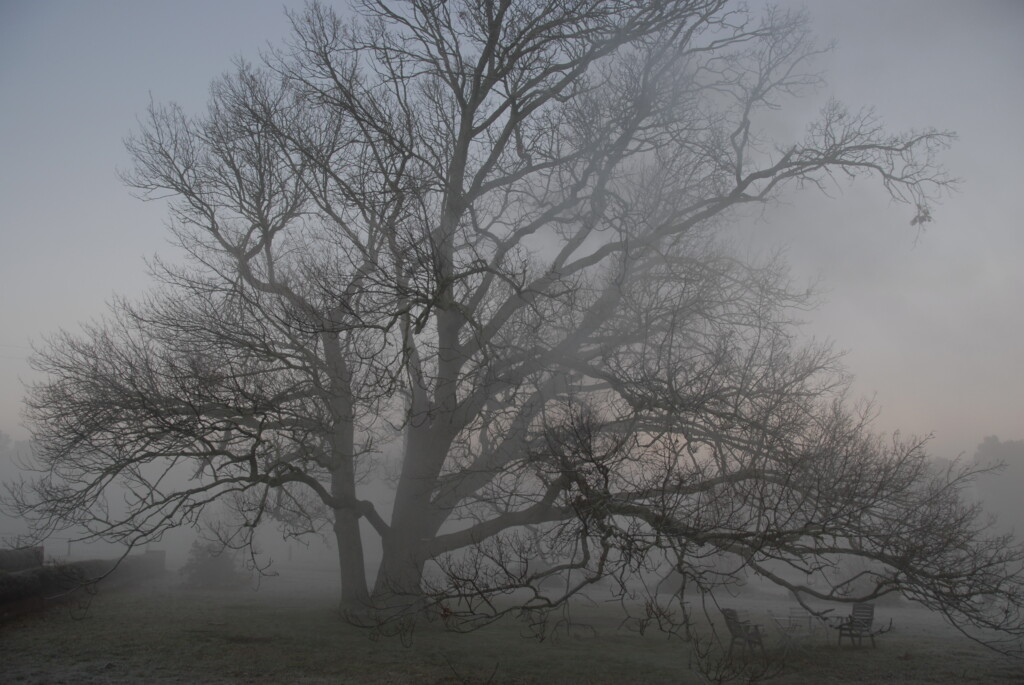The English oak, in the UK, was once known as the ‘tree of peace’. If this term fills you with thoughts of sunny afternoons, picnicking safely in the vast, enveloping embrace of its gargantuan canopy, then think again. It was called this as it was the oaks’ essential contribution to ship building, and hence to a vast navy, that led to the title. It was therefore the tree that allowed Britain to conquer and colonise, and then keep the ‘peace’. You might just as easily label, in true Orwellian style, the USA’s nuclear armoury as the ‘bombs of peace’. The oak was also described, for similar reasons, but perhaps with a slightly more disingenuously defensive tone, as ‘the wooden walls of England’.
But knowing that doesn’t shake, even for a millisecond, the flush of peace that floods my system as I stand before our huge old grandfather oak for which we purchased this property, and let those words ‘tree of peace’ roll around my reality.

There’s gigabytes worth of information that’s been written, and is yet to be written about the history of, the ecological significance of, the joys of, the cultural significance of, the oak, and I’m tempted to push my word count to do so.
But the one thing I want to celebrate about this English oak here, in this context, is its truly remarkable adaptability in the Australian landscape. It’s proven to be vastly more drought and heat tolerant than the pasty white sun-averse characters (and I can say that, as I am one) that brought the first acorns out here. It’s one of the toughest of big old trees in temperate gardens, and, very notably, one of the most fire-suppressing. Word around here (Mt Macedon – having faced devastating fires in 1983) is that it was the oaks, more than any other tree, that saved some of the grand old gardens and houses, as the fire simply diverted around them, dam-like, and took the path of least resistance.

But practicalities aside, our oak is the one hundred and fifty year-old stake around which our lives pivot. It stands directly in front of the house, and every entry and exit requires that we pass it. My kids grew up playing within the immense dome – 25m across – and insist that we stick around to make sure their kids can do the same. I’ll never forget the day, not long after we arrived, when I saw two legs dangling over the side of the one heavy horizontal branches and realised it was my eldest daughter, just sitting up there, reading.

As I write, the buds in our oak are swelling to breaking point. What follows is weeks of membranous, semi-transparent leaves of blinding golden lime, which match nearby Euphorbias for acidic intensity. The tree has been leafless since late May, but I never tire of it bare. Indeed, I’m never quite sure that I’m ready for it to leaf up. Then it does, and I totally love the bubble of green that closes in and over me as I enter. Then when it starts to thin, I’m never sure I’m ready for that, either. No one phase lasts so long as to have me longing for the next.
There’s nothing showy about this tree. The flowers are nothing. The autumn colouring is, at very best, modest. But there’s nothing to match an English oak for dignity and majesty. If you have the room…

The oaks are the most superb trees coping with long dry seasons providing wonderful shade. The new growth almost euphorbia green always excites me, and like you Michael I love the bare branches in winter. Ikebana time!
I always wonder how much more golden the actual golden oak could be, when mine comes into leaf. Hard to imagine anything more vibrant.
Thanks for this, Michael. A lovely and evocative description of a beautiful tree.